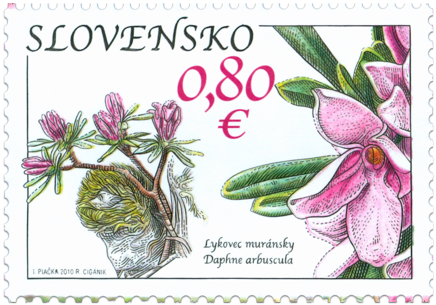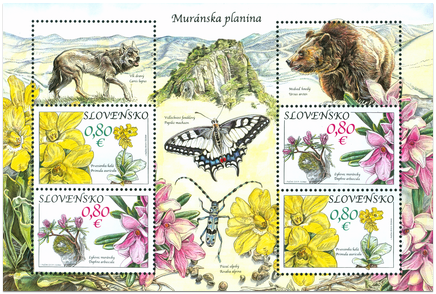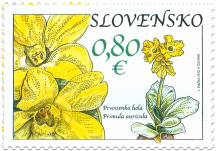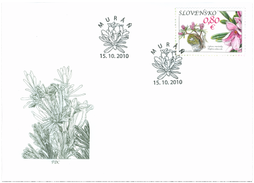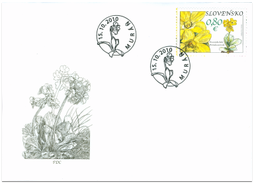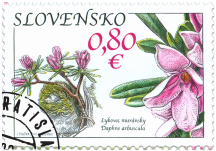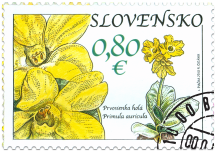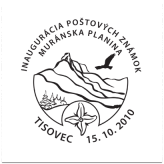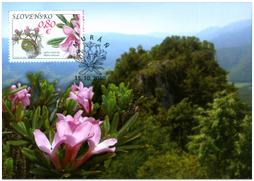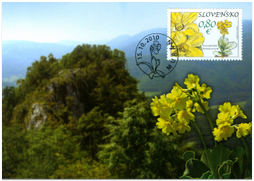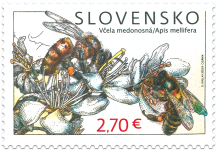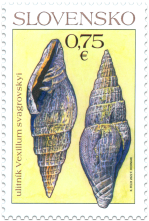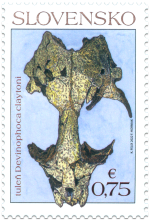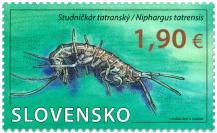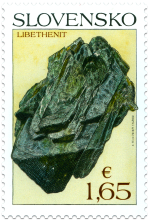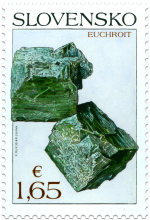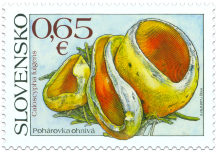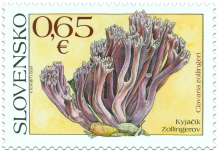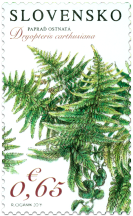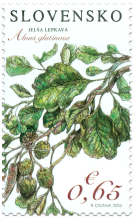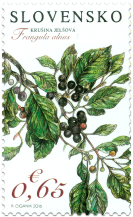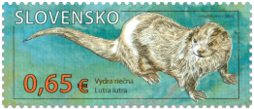482 Date of issue
15.10.2010 Face value
0.80 € Sell price
0.80 €
The genus Daphne includes around 50 species which are located in Europe, northern Africa and the subtropical zone of Asia. Leonard Fuchs in the 16th century stated the first professional term for this genus Daphne, originating in Greek, meaning Daphne laureola because the Daphne leaves remind of the shape of Spurge-laurel. There are three species of this genus in Slovakia. The most precious of them is Daphne arbuscula. This endemic species in its occurrence is connected to the mountain range of Muránska plain in Western Carpathians and it may not be found anywhere else in the world. The area of occurrence does not exceed 200 km2 and there are only around 30 known locations. It can be found on limestone steep rock and rock edges, occasionally on hillwash or in thin pinewoods. On these biotopes Daphne has survived from the Cainozoic (it represents a tertiary relict) during the unfavourable ice age periods because it belongs to precious paleoendemits. The closest species is Daphne petraea located in the southern foothill of the Alps in northern Italy. Due to its preciousness, the plant has become a symbol of the National Park Muránska plain. This is the reason for it to be the motif for the stamp issue. The plant is 10 – 30 cm high vine bush growing in bunches. It blooms from the beginning of April to June. Intensively smelling flowers appear in 3-6 in umbels, they are pink, sometimes white. The flowers are cross-pollinated; they are mainly pollinated by bees and bumble-bees. If the conditions are favourable, the plants create seed in drupes. Their development is fast, it lasts for only 2-4 weeks from pollination. The seeds are dispersed by ants (myrmecochory) or splashing water. They germinate only rarely, therefore this species is dispersed mainly in vegetative way. The plant contains poisonous alkaloids mezerein and daphnine. Due to its high decorative value the plant is favourite with the alpine plants growers. This species is therefore endangered with digging and treading down by tourists. The mass herbarium collections were made from three locations which led to extinction of one of the locations. Fortunately, most locations are outside the tourist paths on inaccessible places. Today it would be difficult to determine the original spreading of this species prior to the ice ages and therefore, we have to protect at least this small area of occurrence. The species is protected by law and it is included in the Red list of plants of Slovakia among the endangered species.
Jaromír Kučera
© 2024 POFIS - Postal philatelic service. All rights reserved

